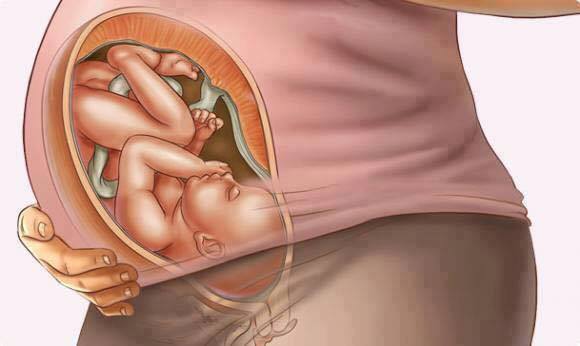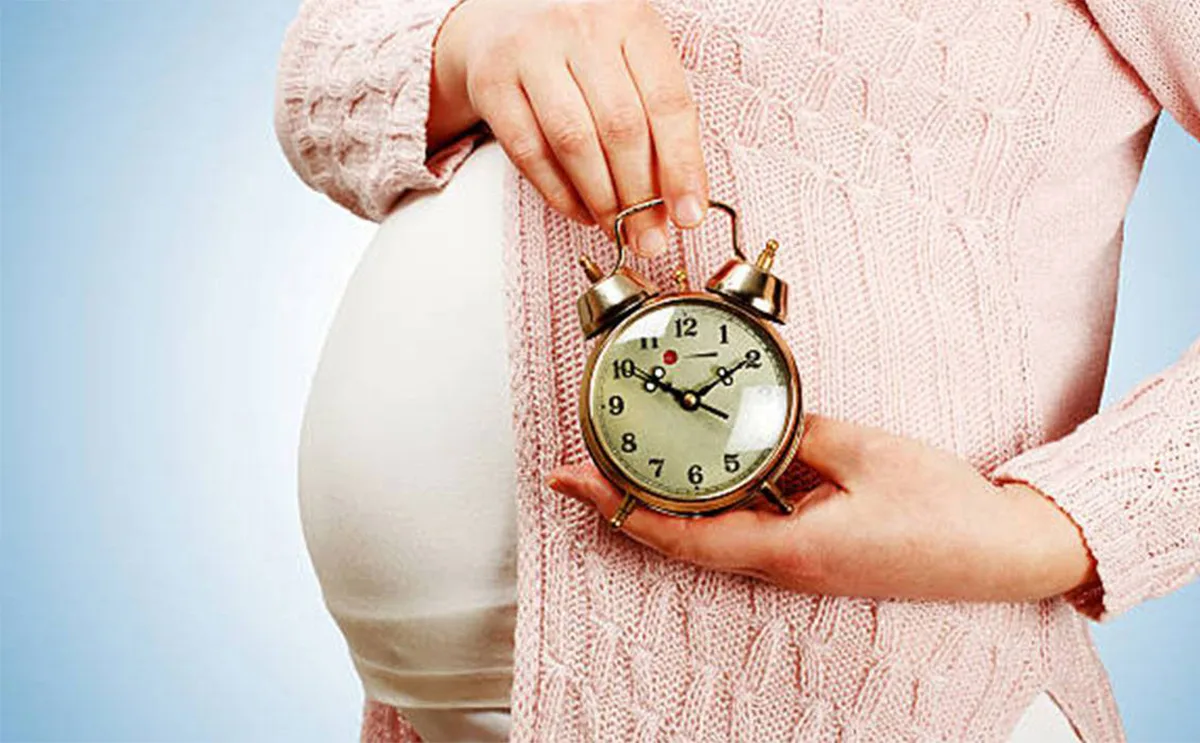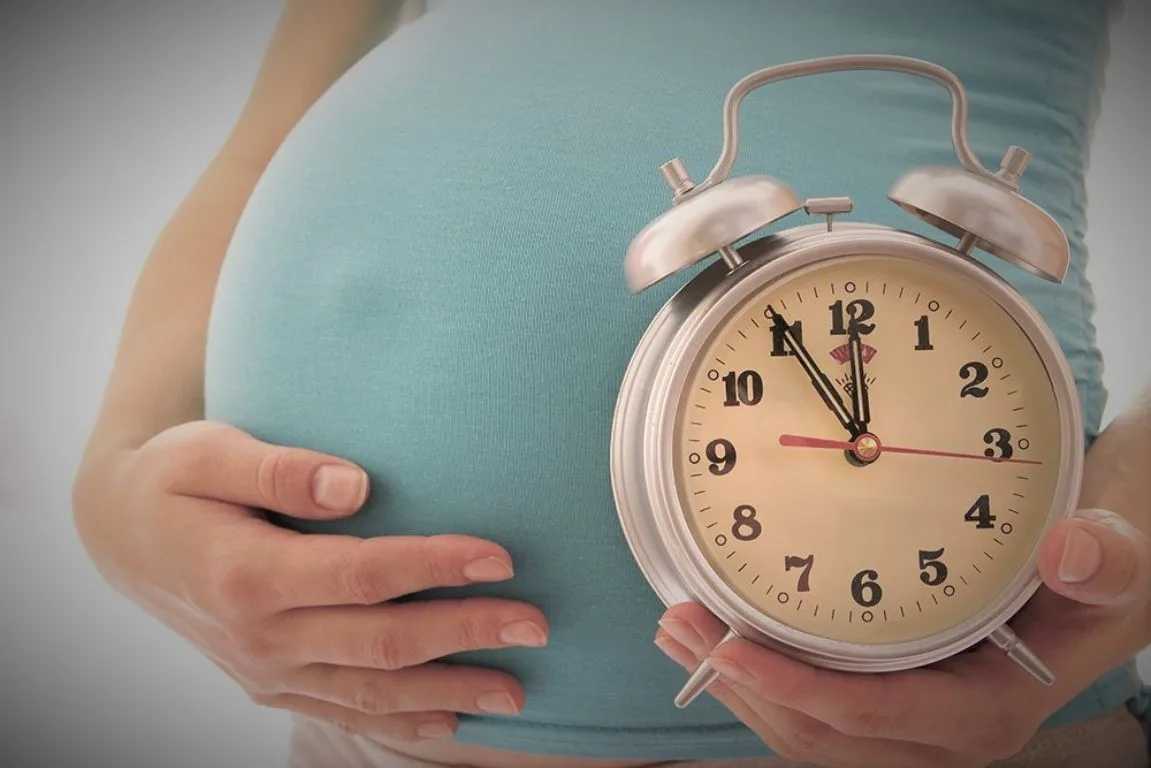Opening of the uterus is XNUMX cm
Many may think that a 1 cm opening of the uterus means that it will be time to give birth soon or in a few days.
However, the truth is that the timing of birth cannot be determined solely based on a 1 cm opening of the uterus.
The uterus must be open by 10 cm and contractions should occur in order for birth to occur.
It is first important to point out that the cervix begins to expand gradually as the woman enters the last month of pregnancy.
This expansion occurs to enable the fetus to pass through the birth canal.
These dilatations are caused by contractions that open, relax and shorten the cervix and then become less tense (cervical effacement) to allow the baby to move through the birth canal.
The first stage extends from when the mother feels some pressure in the pelvic area with contractions and a brown or bloody vaginal discharge.
For birth to occur, the uterus must be 10 cm open.
The doctor can determine the extent of the opening of the uterus, and if it is only 1 cm open, this means that the baby has not begun to arrange for birth yet.
There are some methods that can increase the chance of the fetus's head descending into the pelvic area, such as walking and moving for a long time.
In addition, there are some exercises that can help lower the head into the pelvic area.
It is important to mention that the cervix is completely closed at the beginning of pregnancy, and it can dilate at a rate of 1-2 cm before giving birth after weeks, several days, or even just a few hours.
Therefore, it is normal for the cervix to begin to dilate by 1 cm at the beginning of the ninth month of pregnancy, without this indicating that the due date is approaching.
The timing of birth when the uterus opens 1 cm varies from one woman to another, as the cervix can dilate more and birth occurs within days, while for another woman it can take longer.

How do I increase the opening of the uterus?
- Eating dates:
Some studies confirm that eating dates in the last weeks of pregnancy can increase the opening and dilation of the cervix at the beginning of labor, thus reducing the need to use any induction.
It is important to ensure that you consume the appropriate amount of dates as directed by your physician. - Dilation of the cervix for manual birth:
Dilating the cervix for hand birth is a method some doctors use to induce labor.
The doctor manually separates the amniotic sac from the area surrounding the cervix, which stimulates the secretion of the hormone prostaglandin, which stimulates uterine contractions.
It should be noted that it is not recommended to follow this method in case of vaginal infections. - Using a birth ball:
The birth ball can be used as a disciplinary and exercise device.
Pregnant women can use a chair to rest the upper body and move the pelvis in circular motions.
These exercises help facilitate the opening of the cervix and stimulate labor. - Induction of labor:
Before delivery, labor may be induced by your doctor to facilitate the delivery process.
This is done by giving the mother hormones that help increase contractions in the uterus and thus facilitate the opening of the cervix.
However, the treating physician must decide whether induction is appropriate for the condition of the pregnancy and the mother's health.
When does the uterus open XNUMX cm?
Scientific sources indicate that the cervix gradually opens during labor.
If the uterus has opened by XNUMX cm, this means that the woman has entered active labor.
At this stage, the uterus begins to expand and contractions intensify, causing the cervix to open, loosen and shorten to pave the way for the baby to move through the birth canal.
When the opening of the uterus reaches XNUMX cm, the woman is about to give birth, as the second stage of labor, called the “active phase,” begins.
This stage is the longest in labor and can take a few days or a few hours.
As the opening of the uterus increases to XNUMX cm, the woman may feel more severe and intense pain, and be able to breathe with difficulty.
This feeling can be strange for pregnant women, especially in the last months of pregnancy.
It is important to mention that the duration of the opening of the uterus and the progress of childbirth varies from one woman to another.
Some women may need longer to go into active labor, while others may have it happen faster.
There is a stage called the “latent stage”, which occurs between the beginning of labor and when the cervix opens to XNUMX cm.
This stage tends to be slow and lasts on average about XNUMX hours for the first baby, and XNUMX to XNUMX hours for women who have had children before.
However, the latent phase may sometimes last XNUMX to XNUMX hours.
| The stage of labor | Opening of the uterus |
|---|---|
| Latent stage | Up to XNUMX cm |
| Active phase | From XNUMX cm to XNUMX cm |
| Transitional phase | From XNUMX cm until the uterus is fully opened |

How long does labor last for a virgin?
Labor in the natural birth of a virgin continues for a specific period. The natural birth of a virgin may take from 10 to 14 hours in the first pregnancy, and may take up to 18 hours.
Cold labor is characterized by the fact that the duration of its uterine contractions does not exceed 30 to 45 seconds each time.
If the woman is a virgin, active labor following cold labor will likely last up to eight hours, but it may be longer or shorter than that.
The first stage of labor and birth occurs when the woman begins to feel continuous contractions.
The duration of this stage usually ranges from 4 to 8 hours or more.
After the cold labor period, labor follows, which is characterized by successive contractions of the uterus.
This labor usually lasts up to 6 to 10 hours, as the uterus works to expand its neck, which expands slightly with each contraction.
The cervix needs to open about 10 cm for the baby to pass through, and this is called full dilation.
In a first primiparous labor, established labor and full dilatation usually takes 8 to 12 hours, but is often faster in a second or third pregnancy (about 5 hours).
Symptoms hours before childbirth?
- You suffer from cramps and contractions: Contractions begin in the case of steady labor, and the woman may feel cramps in the abdominal area.
- Lack of sleep: It may be difficult for a pregnant woman to get enough sleep during steady labor.
- Breaking of the head or birth water: Breaking of the head or birth water is considered one of the signs of labor hours before labor.
It can happen that large amounts of water come out or small amounts that wet the underwear. - The abdomen decreases and changes in shape: The fetus moves during this period to settle in the pelvis, which makes the abdomen become lower and change its shape.
- Cervical dilation: The cervix begins to dilate, as the lower part of the uterus gradually becomes more extended and open.
- Increased vaginal discharge: Women may notice an increase in vaginal discharge, which may be brown or pink in color.
- Increased need to urinate and defecate: A woman may feel a very large and frequent need to urinate and defecate during steady labor.
How many cm do they give for a dorsal injection?
An epidural is a procedure given to pregnant women to relieve pain during labor and delivery.
The timing of the injection varies depending on several factors, but it is usually given after the cervix has dilated to 3-4 cm and as contractions increase in intensity.
You must also consult a doctor before administering the needle to ensure that there are no health problems that prevent its use.
Some cases prevent the administration of a back needle, such as a pregnant woman suffering from blood diseases and having heart problems.
Therefore, the appropriateness of using a back needle must be determined based on the position of the pregnant woman.
When a back needle is given, it is injected into the back in a specific area by a doctor who specializes in anesthesia.
The procedure usually takes between 10 and 20 minutes to start working, as the needle works to reduce pain during labor and delivery.
It is worth noting that there are different types of back needles, some of which are more painful than others.
Artificial labor may require a more effective back injection, while emotional support can have the effect of relieving pain.
The back needle is an important procedure in the birth process, as it contributes to reducing severe pain and providing greater comfort for the pregnant woman.
However, the pregnant woman must consult a doctor and discuss the use of the back needle in order to determine the ideal timing for administering it and ensure its safety according to her health condition.

Is the large number of white secretions indicate the imminent birth?
White discharge may be one of the signs that labor is approaching.
Some women notice vaginal discharge a few days before or at the beginning of labor. These discharge can be heavy, clear, pink, brown, or accompanied by blood.
In most cases, the amount of secretions increases near birth, but it should be noted that white secretions are not white, and therefore are not evidence of the approaching birth, so there is no need for concern.
However, if the color of the discharge changes and becomes pink, this may be an indication that the due date is approaching.
The cervix remains responsible for producing white secretions during pregnancy, and these secretions may have a mild odor, which is normal.
But if there is any change in the amount, shape, or smell of the secretions, this may be an indication of a problem.
Moreover, the amount of white secretions increases before childbirth, but these secretions are not considered the same secretions that indicate the imminence of childbirth.
So, if the secretions increase in a large amount or change in nature, this may be a sign of a problem and a cause for concern.
Vaginal discharge may also increase near the due date, and may be bright white, pink, or even slightly blood red, and this may occur a few days before labor begins.
An increase in these secretions is one of the most prominent symptoms of approaching labor.
Although white discharge may be a sign of the imminent birth date, it is not the only sign of this.
There are many signs that may indicate that labor is approaching, for example, the opening of the cervix.
What is the drink that helps to open the uterus?
One of these drinks is “cinnamon drink.”
Cinnamon drink is considered a natural drink that can contribute to relaxing the uterus and stimulating the birth process.
Therefore, it is recommended to consume this drink in the prenatal period.
In addition, there is “thyme drink,” which also contains benefits that help relax the uterus and facilitate the birth process.
This drink is prepared by using thyme and consumed before giving birth.
“Anise drink” is also considered one of the drinks used to treat some problems related to childbirth.
It contains stimulating properties that contribute to stimulating and emptying the uterus, and thus contributes to facilitating the birth process.
However, many questions may arise about opening the uterus and its effect on natural childbirth, including a question about whether chamomile contributes to opening the uterus.
Some medical studies indicate that eating chamomile may speed up the birth process, stimulate uterine contractions, and stimulate labor.
We cannot forget the benefits of “ginger drink” either, as it stimulates the muscles of the uterus and contributes to facilitating the birth process, in addition to its many other benefits for the health of the body.
Using these drinks to facilitate the opening of the uterus is considered a natural method, but it is not a substitute for medical advice.
Therefore, it is advisable to contact doctors and consult them before consuming any of these drinks or starting any new prenatal diet.
Does walking help open the cervix?
Walking seems to play an important role in facilitating the birth process and opening the cervix.
Walking is a low-intensity physical exercise that can positively affect the opening of the cervix and make it easier to push the baby out.
Therefore, doctors advise increasing walking practice in the last months of pregnancy.
Research indicates that walking in the ninth month of pregnancy also helps widen the opening of the uterus and facilitate the birth process.
Walking stimulates the cervix and enables the fetus to move toward the pelvic area.
It is noted that walking does not lead to labor contractions, which are considered a process of periodic tightening and relaxation of the uterine muscle responsible for pushing the baby out.
In addition, walking has other benefits for pregnant women in the ninth month, as it enhances the stability of the baby in the pelvis and helps in the release of prostaglandin, a hormone that contributes to preparing the body for childbirth.
Walking is also a way to relieve labor pain and improve the baby's position to facilitate delivery.
What are the fruits that facilitate childbirth?
Some fruits are actually useful for facilitating the birth process and shortening the period required for labor to occur.
Tropical fruits such as dates and pineapple are among the fruits that are preferable to eat in the last months of pregnancy.
Dates are rich in fiber and antioxidants, and are believed to stimulate the secretion of enzymes that contribute to thinning the cervix and facilitating labor.
Eating dates may reduce a pregnant woman's need to induce labor during childbirth.
Pineapple is also a fruit that facilitates natural childbirth.
Pineapple contains an enzyme called bromelain, which helps in softening and dilating the cervix, which speeds up the birth process.
The benefits of pineapple and dates to facilitate childbirth are related to eating them in the ninth month of pregnancy.
It is recommended to include these fruits in the general healthy pregnancy diet, but a doctor must be consulted before eating them to ensure the safety of the pregnancy.
Does the fetus move when the due date approaches?
When the date of birth approaches, many people begin to pay attention to the movement of the fetus in the mother’s womb.
It is important to know whether the fetal movement actually indicates that the due date is approaching or not.
Fetal movement does not necessarily indicate the approaching date of birth.
Rather, this movement is considered an indicator of the health of the fetus and that it is fine.
Therefore, there is no relationship between the intensity of fetal movement and the proximity of delivery.
In the eighth month of pregnancy, the uterus becomes tight for the fetus, and therefore, its movement may decrease.
Some may feel a lack of fetal activity and its movement becomes less before the desired date of birth.
However, doctors point out that fetal movement continues throughout pregnancy and during childbirth, including labor.
The uterus is expected to narrow more as the due date approaches, reducing the fetus's ability to move freely.
The nature of fetal movement before labor may vary depending on the date of birth itself.
For example, fetal movement is strong in cases of premature birth in the ninth month of pregnancy, and this is due to the increase in the size of the fetus and the narrow space of the uterus around it.
As the due date approaches, fetal movement may become very slow.
However, the mother should feel a number of fetal movements at least ten times during the day.
Increased fetal movement is not considered a sign of birth, quite the opposite, as fetal activity usually decreases as the date of birth approaches.
Some people may feel symptoms of severe cramps in the lower abdomen during the ninth month of pregnancy, but this does not necessarily indicate that the due date is approaching.
